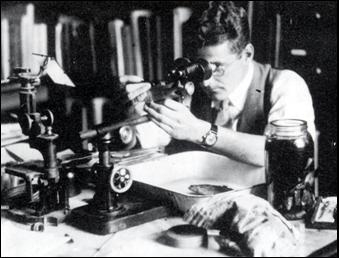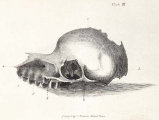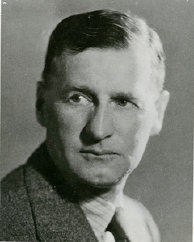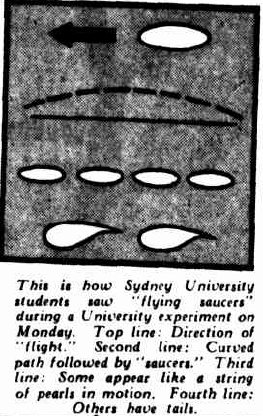
Contact

Home
Angourie Crocodile part 3
Australia's Home-Made Monsters
The Courier-Mail (Brisbane, Qld.)
Date: March 26, 1940
Page Number: 4
RECURRING reports of a mystery "crocodile" in the Angourie district of Northern New South Wales has in spired Mr. Gilbert Whitley to write — and the Australian Museum magazine to publish in its current issue — a history of the monsters of Australia.
In this entertaining study he analyses the distorted observations which have peopled our bush and billabongs with tigers, bunyips, serpents of fabulous length, and dark monstrosities. And, says Mr. Whitley, they compare favourably with such foreign figments as the Loch Ness Monster, the Abominable Snowmen of Tibet, the Taniwha of New Zealand, and the hosts of unicorns, centaurs, dragons, gorgons, basilisks, cocketrices, fairies and fauns, mermaids, werewholves, and other fantastic chimera.
Many of our mythical animals were invented by the aborigines, some of them were really horrible ; others rather ludicrous.
Then, too, "the first white visitors to Australia, the indomitable Dutch, using charts on which the Great South Land was doubtless already peopled with imaginary monsters, were immediately impressed with the strange animal life here," he says.
Jacobszoon, Tasman's pilot major saw aboriginal notches six feet apart in Tasmanian trees and thought them the footholds of giants ...
In 1697 Vlamingh discovered an "impossibility"— a black Swan ...
Dampier in 1699 caught an 11-foot shark and "its Maw was like a Leather Sack in which we found the Head and Boans of a Hippopotomus . . ." (Dampier's "Hippopotomus" has since been determined as a dugong.)
The evergreen Bunyip was first perpetrated by the crew of the French ship, Geographe, who in 1801 were frozen with terror by a horrible roaring, "louder than the bellowing of a bull," which came from the reeds of the Swan River. The realistic Mr. Whitley suggests that it was a sea elephant.
It remained for the Australian explorer, Hamilton Hume, to catch the first sight of the Bunyip, and when members of the Philosophical Society met in 1821 they decided to finance Mr. Hume in a search for the animal "supposed from his description to be the Manatee or Hippopotamus."
He never found it, but 25 years later a bunyip skull was found on the banks of the Murrumbidgee. It started a scientific controversy—but only as to whether it was the deformed head of a calf or a colt.
The tiger story is one which has had a wide currency. It began in 1895, when a fearsome tiger at Tantanoola, Victoria, was appalling the district with his roars. When shot by a safari of Tantanoolians it proved only to be a calf with some laryngeal defect.
One animal to which Mr. Whitley does give some credence is a large striped marsupial cat alleged to haunt the tangled forests of Northern Queensland. In this he is supported by Mr. Ion Idriess and the Australian Museum's mammalogist (Mr. E. Le G. Troughton).
Anti-climax of all the tales was the most recent one of the Angourie Crocodile. Mr. Whitley reports that the biggest and bravest foray after this phenomenon produced only "a mass of goannas and five courting couples."


Gilbert Percy Whitley
(1903 - 1975)
Cultural Heritage: English
Occupation: ichthyologist, museum curator, zoologist
c. 1941


Tantanoola Tiger

Cranium of a Bunyip
THE ANGOURIE CROCODILE AGAIN
POLICE BELIEF IN ITS PRESENCE
Singleton Argus (NSW)
Date: April 8, 1940
Page Number: 2
The Police Department believes that the Angourie crocodile is still in the district. In a letter to Harwood Shire Council, it suggested that, in view of the possibility of the crocodile visiting the swimming pool at Angourie, a wire fence be erected around the pool. The letter informed the council that after the crocodile had been seen in November, scales, a plaster cast of footprints, and tracks were identified by the museum authorities as definite evidence of the presence of a crocodile. Further tracks of the crocodile had been found, but no person had seen it since the first report made to the police. It was therefore proposed to discontinue the search, which had been continued at frequent intervals ever since the first report. The council decided to take no action.

ANGOURIE CROC.
EXISTENCE STILL BELIEVED.
Cairns Post (Qld.)
Date: April 9, 1940
Page Number: 7
The search for the Angourie crocodile has been officially given up at last, but Harwood Shire Council is not satisfied that it was a myth.
It considers that the crocodile may still be in the district and, in a dry season, may go to the swimming pool at Angourie.

ANGOURIE "CROCODILE"
ON WALK-ABOUT AGAIN.
Cairns Post (Qld.)
Date: April 29, 1940
Page Number: 1
GRAFTON, April 26.
Angourie's "crocodile" apparently is on another walk-about. Two Maclean residents say they found tracks on a detour from the usual route to Shelley Beach. This is the first "appearance" since—more than 12 months ago—a business man offered a reward for the local saurian "dead or alive."
The two Maclean residents say they found large, unusual imprints crossing a watercourse. They ended at a waterhole.
At first they thought the tracks were those of a kangaroo, but closer examination showed them to be too large and too unusual to have been made by a marsupial—they were made by an animal of some size which dragged its tail as it crawled.
They say they found the tracks to be identical with a reproduction of those found at Angourie during the search in December, 1939. In this set the imprint of a heavy tail stood put distinctly.
The new tracks were a few miles south of the previous spot.
Early in December, 1939, Mr. D. Rutledge, of Yamba—three miles from Angourie—reported that he had seen a 15ft crocodile lying near the tramway over which, he was driving.
This is the only instance in which the reptile is reported to have been seen, but various imprints were discovered, including some which suggested that they had been made by something "more than 14ft long."
Search parties failed to locate a crocodile, but this did not shake the faith of dozens that there was one in
the district.
Long before Mr. Rutledge's report, blackfellows in the locality claimed that there was a monster, roaming the swamplands at night.

THE "SAUCER ILLUSION"
Professor Elaborates His Theory
The West Australian (Perth, WA)
Date: July 9, 1947
Page Number: 1
SYDNEY, July 8.
The Professor of Physiology at Sydney University (Professor F. S. Cotten) said tonight that reports of "flying saucers" seen at night were not in consistent with his opinion that they are an illusion due to the passing of red blood corpuscles over the retina of the eye.
"With a fair amount of moonlight, as there was last night, the illusion could occur," he said. "Some of my students say they have seen the things in the evening."
Asked whether the power to see "flying saucers" depended on one's state of health, he replied: "It has no connection with such things as the spots seen before the eyes by intoxicated people, or the pink elephants seen by D.T. patients. They are due to entirely different causes. One healthy person might be more disposed than another to have the saucer illusion, but it would be impossible to tell in advance each in dividual's susceptibility."
"False Perceptions."
Professor Cotten's theory of "flying saucers" had a 90 per cent probability of being right according to Professor H. Tasman Lovell, formerly Professor of Psychology at the Sydney University. "False perceptions of a similar kind are listed in most psychology textbooks," he said. "One of the commonest is the impression that two parallel lines slope towards each other if a slanting line is put between them. An illusion depends on a genuine experience in one of the sense organs. The eye is more subject to illusions than any of the other organs."
Asked if the Loch Ness Monster, the Grafton Crocodile and other legendary creatures came into this class of illusions, Professor Lovell replied: "Yes. It is not uncommon for imagination to add something to a false perception, if people are in a state of mind to expect what they think they see. The development of guided missiles and the present international tension could predispose people to regard false perceptions as "flying saucers." It would be easy for them to connect their illusions with important national happenings and with spiritual happenings in themselves, such as their fear of strange new missiles."


Henry Tasman Lovell
(1878–1958)
Cultural Heritage: New Zealander
Religious Influence: Anglican
Occupation: academic, censor, psychologist, schoolteacher, teacher training college teacher

















